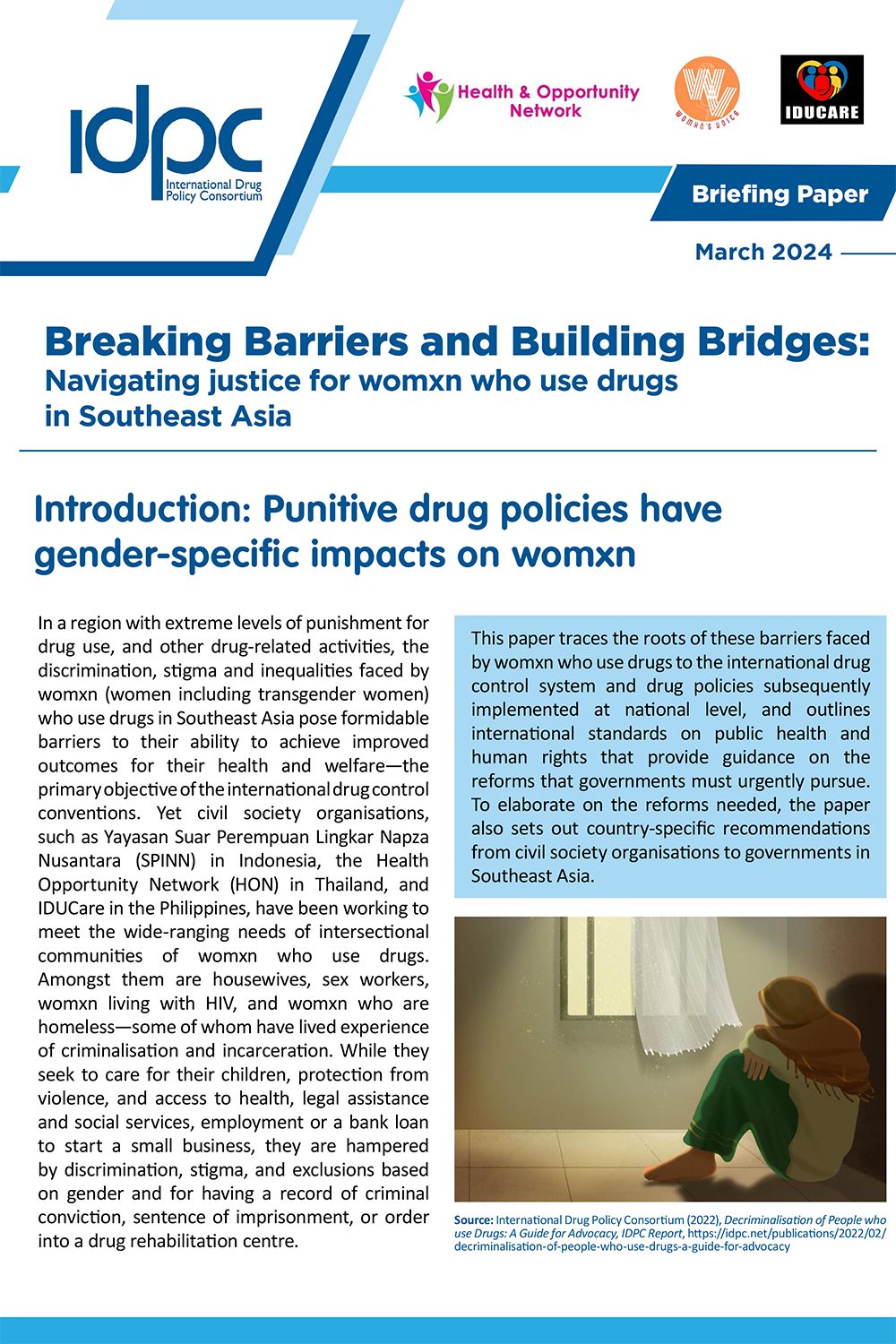In a region with extreme levels of punishment for drug use, and other drug-related activities, the discrimination, stigma and inequalities faced by womxn (women including transgender women) who use drugs in Southeast Asia pose formidable barriers to their ability to achieve improved outcomes for their health and welfare—the primary objective of the international drug control conventions. Yet civil society organisations, such as Yayasan Suar Perempuan Lingkar Napza Nusantara (SPINN) in Indonesia, the Health Opportunity Network (HON) in Thailand, and IDUCare in the Philippines, have been working to meet the wide-ranging needs of intersectional communities of womxn who use drugs. Amongst them are housewives, sex workers, womxn living with HIV, and womxn who are homeless—some of whom have lived experience of criminalisation and incarceration. While they seek to care for their children, protection from violence, and access to health, legal assistance and social services, employment or a bank loan to start a small business, they are hampered by discrimination, stigma, and exclusions based on gender and for having a record of criminal conviction, sentence of imprisonment, or order into a drug rehabilitation centre.
The international drug control system is based upon three United Nations (UN) conventions: the 1961 Single Convention on Narcotic Drugs, the 1971 UN Convention on Psychotropic Drugs, and the 1988 Convention against Illicit Traffic in Narcotic Drugs and Psychotropic Substances.1 The stated aim of all three conventions is to improve “the health and welfare of mankind”, and they contain provisions for alternatives to punishment for people who use drugs as well as prevention, treatment and “social reintegration”. Yet the predominant language of the conventions is one of repression, by imposing mandatory levels of prohibition of selected substances for anything other than medical or scientific use. It is in this spirit that the conventions have been widely applied and interpreted since – in a so-called ‘war on drugs’ that has been waged for more than 60 years.
The three drug control conventions have been almost universally agreed and signed to by countries, including all countries in Southeast Asia. The 1961 Convention was primarily focused on the prevalent plant-based drugs at the time (heroin, cocaine and cannabis), so the 1971 Convention was then added to expand the range of drugs being controlled (to include amphetamines, psychedelics and others), and then the 1988 Convention added precursor chemicals into the scope as well. But they have remained unchanged since then, and in particular, have not been updated to incorporate new research findings and understanding of drug markets, drug use and dependence, drug-related harms such as HIV and overdose, effective responses (including harm reduction), and even the nature of the drugs themselves.
